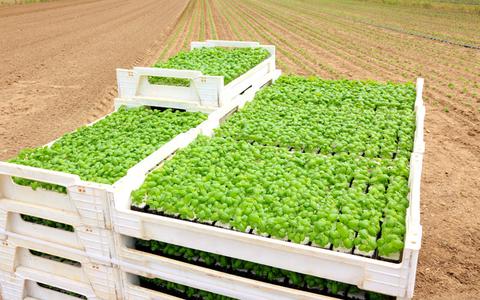Pictures: www.imerisia.gr
It turns out that cultivation of rosemary and basil provides great opportunities for profit, and if it takes place organically – the profit is twofold. According to the law of development, those who are willing to deal with it, as well as those who are already doing it, have the opportunity to be subsidized by up to 50% for investment plans related to the processing of products for the production of essential oils.
Using the new development law, which will be "open" to new applications until the end of October, producer groups can work together and set up companies in order to establish processing units for the processing of aromatic and medicinal plants for the production of essential oils.
Rosemary and basil are two cultures without specific requirements and adapted to the Mediterranean climate, and poor areas can be used for their cultivation. The soil and climatic conditions in Greece are particularly suitable for these herbs that provide excellent quality products. Revenues in accordance with the yields of an organic plantation with these two herbs can reach up to 2,000 euro per acre. Cultivation of herbs in Greece is not unknown, but in recent years, it has been growing as an alternative in agriculture as well as in processing.
A twofold profit in organic farming
The annual yield in the cultivation of basil reaches 400 kg of dried leaves and the revenue per acre could reach up to 800 euro annually, while in organic farming - up to 1,500 - 2,000 euro. The variety, which is grown in Greece, is citriodora, with large leaves and strong aroma. Therefore, it is grown for the production of dry substance and essential oils. Basil is an annual plant which reaches 20-80 cm in height according to the variety. There are also perennial varieties. It is grown in various areas, which may be warmer or colder. A temperate climate is the most suitable.

Fertilization
- Organic farming: the quantity needed to produce 500 kg dry substance per acre is 9.6 kg nitrogen, 2.8 kg phosphorus, 11.6 kg potassium, and 1.6 kg magnesium.
- According to analysis of the soil, by the addition of about 1,200 kg of organic matter, 3 kg phosphate and 20 kg potassium sulphate in the autumn, the requirements in nitrogen, phosphorus, potassium and magnesium are covered.
- Traditional growing: According to experimental data, fertilization with 30 kg ammonium phosphate is sufficient for plant growth
Basil requires a lot of water and irrigation at regular intervals. The frequency depends on the type of soil. During hot days, it should be watered every second day.
Production of dry substance and essential oils
Harvesting is done in two ways:
- By cutting the plants at 10 cm from the ground. In this case, 3.4 harvests are performed annually and the yield is used for drying and the production of dry substance
- By gathering only flowering tops when in full bloom. In this case, 6-7 harvests are made and the yield is used for distillation and the production of essential oils
Drying is carried out in ventilated rooms or in special drying chambers. The production of essential oils is carried out in distilleries similar to those used for peppermint and other plants. About 400-500 kg of dry matter is produced from 2,000 kg of leaf mass per acre.
It is used as infusion (fresh and dry), in salads, as well as an essential oil in perfumery, alcohol production, preservation, manufacturing medicines and soaps.
Low cost, high revenue

For the organic production of rosemary, the profit is almost triple and revenue per acre can reach 1,800 annually. The investment before the start of cultivation of rosemary amounts to 350-400 euro per acre, and cultivation is perennial and continues 12-18 years.
With an average production of 250-350 kg per acre dry substance, growing rosemary can give revenues in organic farming to the amount of more than 1,500 - 1,800 euro per acre, while if it is conventionally grown - up to 500-700 euro per acre.
Rosemary can be grown in warm and cold climates at an altitude of up to 600 metres. Rosemary is propagated mainly by cuttings from the tip with a length of about 10 cm. In order to obtain roots, they are put in a mixture of organic substances and sand (1:1). Before putting them in the substrate, remove all leaves except for the ones on the top. Planting cuttings in the nursery garden can be done throughout the year and time for rooting depends on the season – it varies from 2 to 4 months. The best time for planting cuttings is during the spring. Besides cuttings, shoots planted in the spring are also used.
Fertilization
- Organic farming: the quantities needed for the production of 450 kg dry substance per hectare are 7.1 kg nitrogen, 2.2 kg phosphorus, 10.8 kg potassium and 1.6 kg magnesium
According to the requirements of organic farming the needs of rosemary are covered with the addition of 800 kg organic matter, 3 kg phosphate and 15 kg potassium sulphate per acre in the autumn.
- Conventional farming: 25-30 kg fertilizer is added in the spring.
Gathering - drying